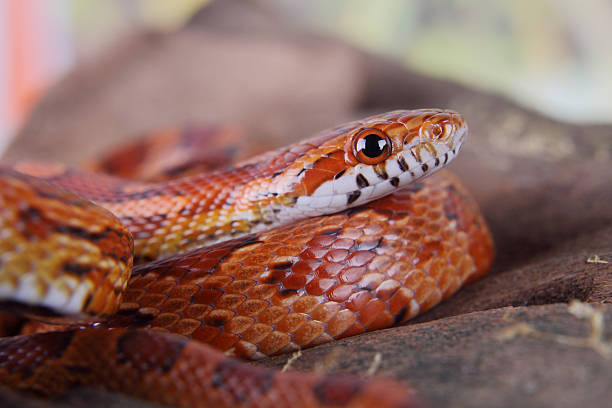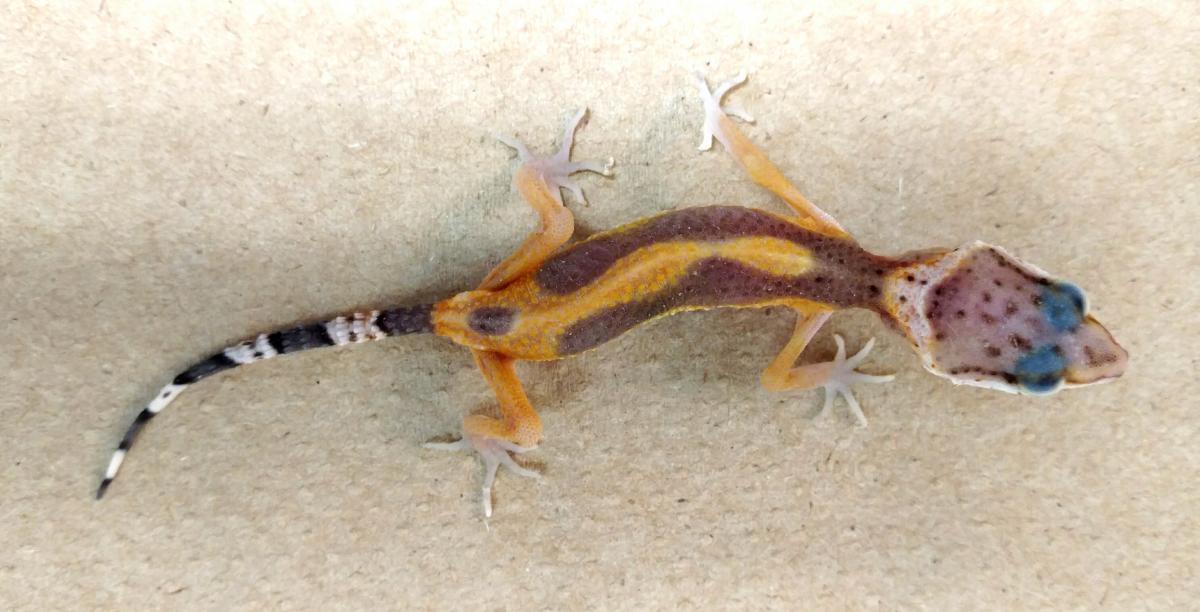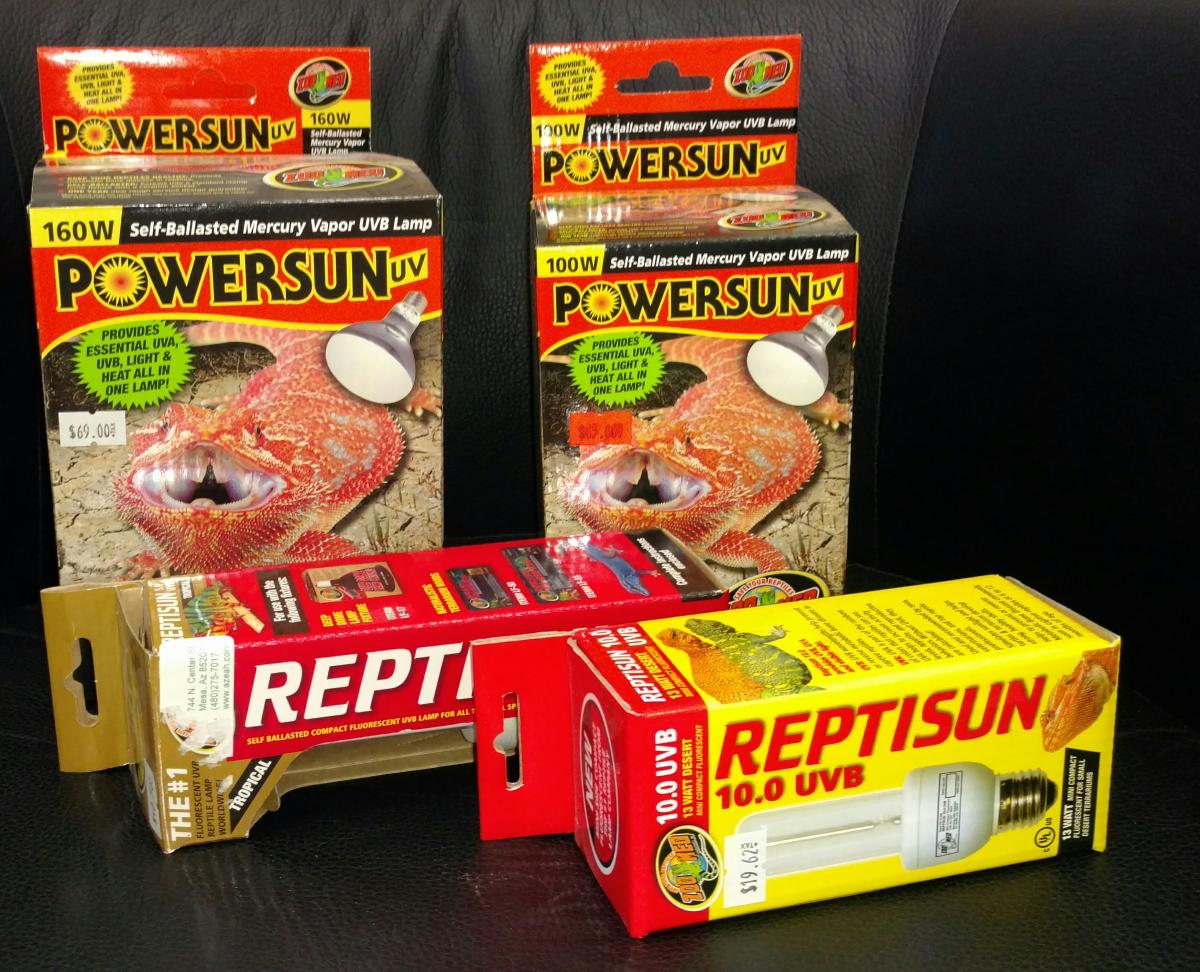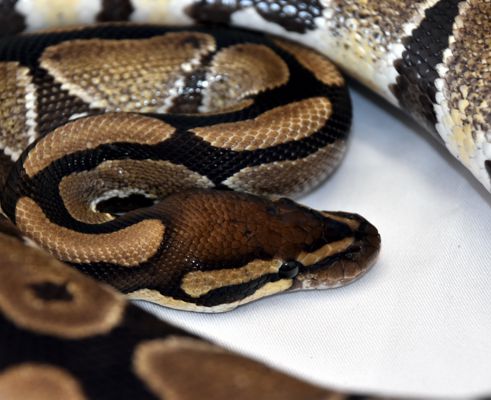Kenyan Sand Boa Care
Natural history:
Kenyan Sand Boas (Eryx colubrinus) are a small (18-36 inches long) docile species native to arid and semi-arid environments of East Africa and are typically crepuscular to nocturnal (active at dawn/dusk and night). Females typically grow larger than males and are ovoviviparous (eggs are incubated internally and then hatched to give birth to live young). With good care, a lifespan of 15-20 years is expected.



 Corn snakes (Pantherophis guttatus) are a species of rat snake native to North America. They are found predominantly in forests and woodlands of the southeastern US. These snakes make popular pets as they are docile, non-venomous, and come in a large variety of color and pattern morphs. Corn snakes reach 2-5 feet in length as adults and may live upwards of 20 years in captivity.
Corn snakes (Pantherophis guttatus) are a species of rat snake native to North America. They are found predominantly in forests and woodlands of the southeastern US. These snakes make popular pets as they are docile, non-venomous, and come in a large variety of color and pattern morphs. Corn snakes reach 2-5 feet in length as adults and may live upwards of 20 years in captivity. Cryptosporiosis is caused by an internal parasite that can infect many different species of animals. It is caused by a protozoal, or one celled, parasite called Cryptosporidium. There are several species of Cryptosporidium, but the most commonly encountered in reptiles is C. serpentis. Cryptospordiosis is an important disease in reptiles due to its tendency to be highly contagious and high mortality rate.
Cryptosporiosis is caused by an internal parasite that can infect many different species of animals. It is caused by a protozoal, or one celled, parasite called Cryptosporidium. There are several species of Cryptosporidium, but the most commonly encountered in reptiles is C. serpentis. Cryptospordiosis is an important disease in reptiles due to its tendency to be highly contagious and high mortality rate.  Reptiles are often referred to being “cold-blooded”, which can be misleading. More appropriately they should be considered poikilothermic or ectothermic. This means that, unlike mammals and birds, reptiles are unable to regulate their body temperatures internally and change their body temperature in adaptation to their environmental temperature. Because reptiles do not need to expend as much energy heating their bodies, they have a much lower metabolic rate than that of mammals. Each reptile species has what is referred to as its preferred optimal temperature zone which is a narrow temperature range at which they are active and undergo typical functions such as feeding, digestion, fighting off infections, and reproduction. Outside of this range these functions may be hindered or cease altogether. Some species will hibernate during colder months and during this time their metabolic rate will decrease.
Reptiles are often referred to being “cold-blooded”, which can be misleading. More appropriately they should be considered poikilothermic or ectothermic. This means that, unlike mammals and birds, reptiles are unable to regulate their body temperatures internally and change their body temperature in adaptation to their environmental temperature. Because reptiles do not need to expend as much energy heating their bodies, they have a much lower metabolic rate than that of mammals. Each reptile species has what is referred to as its preferred optimal temperature zone which is a narrow temperature range at which they are active and undergo typical functions such as feeding, digestion, fighting off infections, and reproduction. Outside of this range these functions may be hindered or cease altogether. Some species will hibernate during colder months and during this time their metabolic rate will decrease.  Here is a brief list of some common health problems seen in pet snakes:
Here is a brief list of some common health problems seen in pet snakes: Ultraviolent or UV lighting is a type of light radiation outside of the visible light spectrum found at higher energies than violet light and it is found in 3 forms: A, B, and C. UVA is used by reptiles to regulate their daily biological cycles and rhythms. UVC is damaging radiation that leads to skin damage and cancers. UVB is the most important light for reptiles as it is necessary for many reptiles to properly absorb calcium from their diet in order to utilize it for hardening their bones and other metabolic processes throughout their bodies.
Ultraviolent or UV lighting is a type of light radiation outside of the visible light spectrum found at higher energies than violet light and it is found in 3 forms: A, B, and C. UVA is used by reptiles to regulate their daily biological cycles and rhythms. UVC is damaging radiation that leads to skin damage and cancers. UVB is the most important light for reptiles as it is necessary for many reptiles to properly absorb calcium from their diet in order to utilize it for hardening their bones and other metabolic processes throughout their bodies.  Ball pythons are modestly sized snakes that range from 30-45" in length and rarely reach five feet or slightly longer. They originate from west and central Africa with most of the wild-collected animals exported from Ghana, Togo, and Benin.
Ball pythons are modestly sized snakes that range from 30-45" in length and rarely reach five feet or slightly longer. They originate from west and central Africa with most of the wild-collected animals exported from Ghana, Togo, and Benin.